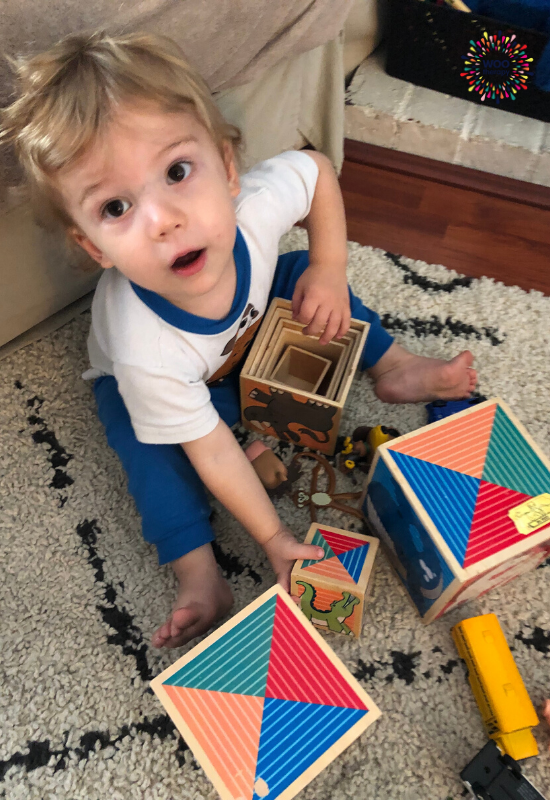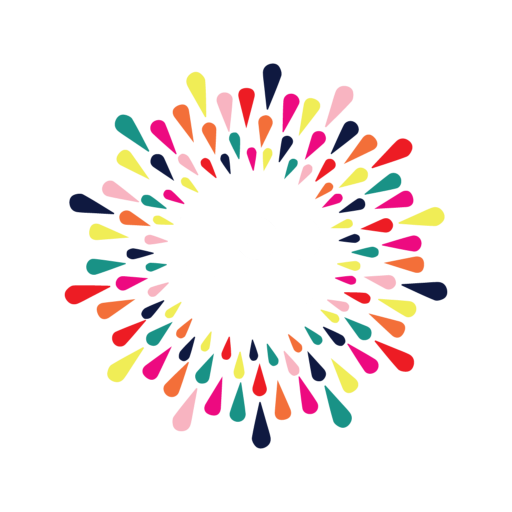
My kids (and I) are ga-ga for all objects, shapes, containers, dolls, etc. that have the capability to fit inside one another or stack to build big towers they can knock down. We started off with a great Melissa & Doug wooden set that is probably my favorite that the boys have (and still use); however, once they figured out the function and purpose of the blocks, they’ve been happy to find and use bowls and cups from the cupboard or their collection of sand buckets they’ve acquired from many different places to replicate the same type of play.

I fun watching how they’ve generalized that “toy” and continue to evolve it over and over again.
Here are some amazing developmental benefits of nesting blocks/objects!
Fine Motor Skills
All sorts of grasping, flexing, rotating, manipulating, and coordinating hand skills are needed to properly orient the blocks whether a child wants to stack or nest.
Orientation
For the goal-directed task of nesting, there is a particular way each block or objects needs to be positioned in space to fit inside another one.
Although, not always necessary for stacking J I find this is a great opportunity to help your child understand the many possibilities in play and don’t force or train them to focus on the “expected” way to play.
Discrimination
A child is required to look at or feel the objects to determine where the opening is versus the sides as well as discriminating the size of each object.

Spatial Relations
After discrimination, a child will have to relate one object to another to decide if it is the next in sequential size, allowing for all the pieces to be used. From watching my littles, this one often comes with a lot of trial and error.
Alignment
Twisting and adjusting the blocks/objects to make them fit in or on correctly.

Ideation
This is fun to watch! How long does it take your child to come up with a plan on how to use all the items together? If they are spread out, can they come up with a plan and desire to stack or nest them?
Open-ended Exploration
Because there is no ONE correct way to play with nesting blocks, kids have the opportunity for limitless creativity. Our blocks have been turned into a parking garage for cars, rides at Disneyland, and Star Wars spaceships.

Sustained Attention
Whether it’s open-ended play or the goal-directed task of stacking a tower/nesting all the blocks, sustained attention is required. I find the open-ended play holds my kids’ attention a little longer, because as they incorporate other objects the play scheme expands and alters rapidly.
Proprioception/Gradation of Force
Watch for the distinction in smooth, coordinated movements resulting in success versus rough, jerky movements resulting in frustration. Don’t be alarmed if you notice they aren’t good at it right away; rather watch over a few sessions with the same materials, if improvements and success are improved/achieved.
Language Concepts & Vocabulary Development
In/out, on/off, up/down, big(ger)/small(er), tall, fall, crash, boom, bang, etc. Plus many nesting block sets have colors, pictures of animals (associate the sounds they make), numbers, the alphabet. Nesting blocks offer so much learning and language in a playful way.

Do you love nesting blocks as much as us? What’s your favorite thing about them?!
Favorite Nesting Toys (affiliate link provided)
Wooden Nesting Blocks – these since they don’t make the Melissa & Doug ones any more 🙁
The Very Hungry Butterfly theme is you like Eric Carle
Battat Plastic Cups w/ shape sorter
Benefits of Songs with Hand Motions

Leave a Reply